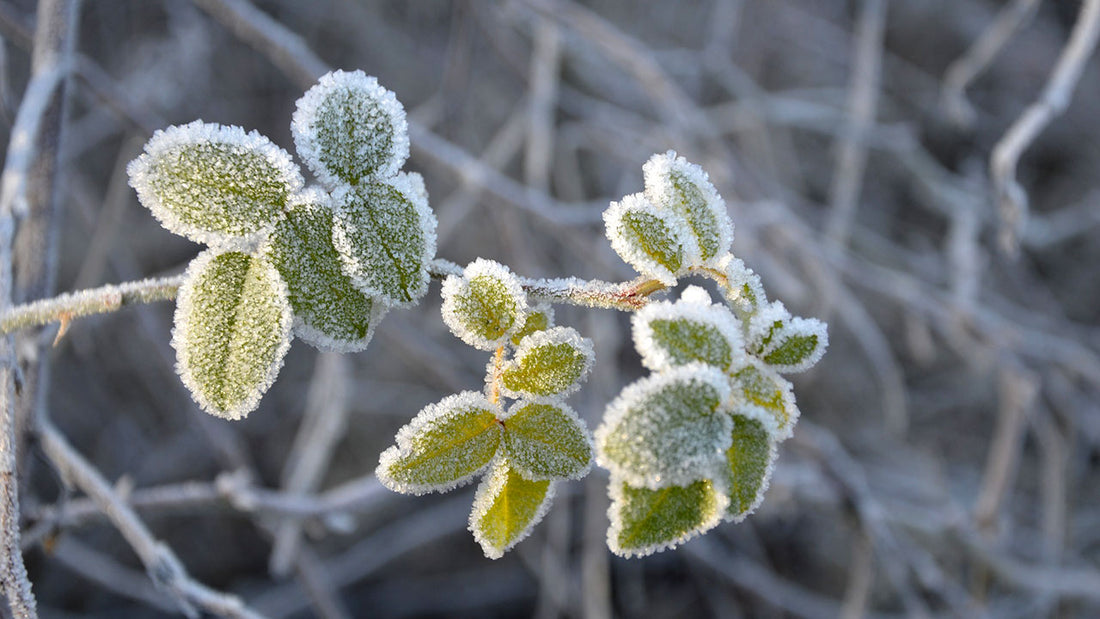During the darkest days of winter, while your orchard is dormant, there is little risk of frost damage to your trees. The biggest danger comes in the spring when the tree starts to break dormancy. The young leaf buds and shoot growth can be damaged by extreme cold, and a late frost or snowstorm can mean a harvest-less year for a tree in bloom.
Unfortunately, there is no cure for frost damage; a tree affected during its spring growth and bloom will have to wait until the next year to fruit. Prevention is key to protecting your tree from frost damage. The first step to preventing frost damage is to select a variety of tree that is cold hardy and has the correct chill hours for your climate. If your region typically experiences a late spring frost, select a variety that is additionally known to have a late bloom time. This will reduce or, if you’re lucky, eliminate the need to take further steps to protect your tree in the spring.
If your fruit trees are damaged by a late frost, you won’t necessarily lose your harvest for the year. Apples, pears and peaches can lose up to 90% of their flower buds without a decrease in harvest. Cherries will have a full harvest even when subjected to a 50% bud kill. The exact temperature that causes bud kill will vary by type of fruit, variety, bud maturity, and length of cold exposure. Most fruit trees in bloom can withstand temperatures as low as 28°F for 30 minutes, with only 10% bud kill (and thus no reduction in harvest). You can find a comprehensive illustrated chart for the lowest temperatures that fruit trees can typically tolerate from Utah State University Extension. If temperatures are expected to drop too low once your tree begins budding or blooming, or if sleet or snow is predicted, it’s time to take action. If your tree is small enough, you can wrap it in frost blanket bags for the duration of the cold snap. For larger trees, spraying with Frost Shield provides protection to young leaves and flowers without damaging them or preventing pollination from occurring.


21 comments
Cherrie, were your trees planted as bare root or were they potted, also did they go from a nice cozy environment like a greenhouse to outdoors? You have a lot of trees and it may not be feasable to cover them with frost blankets. You might want to consult the place where you purchased the trees and see if they have any advice.
We are in zone 3 and just planted a small orchard of 41 fruit trees. We have 15 varieties of apple, pear, plum, apricot, cherry and mulberry. We just had a heat wave of 32+degrees and now we are getting sleet and snow. Some of the apple trees had blossoms when we bought them but we pinched most off. There are a few trees that have small fruit developing, so we left a few on each of those trees. We are new to this and are wondering if there is any danger since the trees have only been planted for a few days.
Nisar, if your trees are small enough you can cover with a frost blanket. The best is to buy fruit trees that are later blooming if your trees come out of dormancy too early.
During cold wave our apple tree flowers, damaged every year need remedies for that
Heath, your tree is obviously an early bloomer, which is always challenging for your zone. If the tree is small enough you can put the frost blanket on it. You can prune peaches in the winter so you are ok there. Does your tree need a pollinizer? By now you should have fruit, although if it blooms super early then your blossoms are probably getting killed by the freezing temperatures. In late spring April-May you can apply a fruit tree fertilizer to help with the tree’s nutrition.